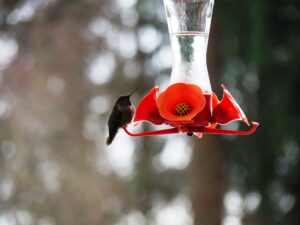 “Either you take in believing in miracles or you stand still like the hummingbird.”
“Either you take in believing in miracles or you stand still like the hummingbird.”
Henry Miller
The recent spell of icy weather and concomitant snowfall has made us once again even more aware of our tiny avian friends – the hummingbirds.
Now – hummingbirds are migratory creatures… except when they aren’t!
Every year each of the many species of hummingbird summons up its minuscule amount of energy and sets off on the oft-thousand mile journey to Latin America (lucky things!)… except when they don’t!
The exceptions are the Anna’s Hummingbirds – common and much loved on the west coast of the North American continent – which seemingly can’t make up their mind if they are migratory or not!
Now – many folk who put out feeders for these beautiful but tiny birds will pack them away in the autumn – not to be in demand again until the following spring. Not so those of us who have Anna’s for company. We have to keep up the nectar production year round (unless the birds decide that this year they really will fly south).
There are some who say that the reason that Anna’s have become confused as to their species characteristics is that they have been so fooled by all these year round feeders providing them with quick shots of energy that they don’t get the message that it is time to head south. In other words – it is all our fault for feeding them.
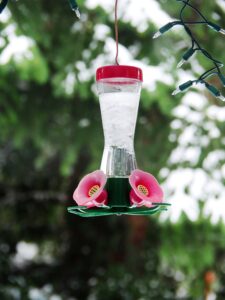 Others say that this is an urban myth – that hummingbirds know when it is time to fly by the diminishing daylight hours and that it would make no difference if we fed them or not. These knowledgeable folk point out that hummingbirds are a lot hardier than we think they are, that they are quite capable of feeding themselves through the winter on insects and grubs living in the bark of trees and that when it gets really cold they slow their heartbeats right down and enter a state of torpor (no jokes please!).
Others say that this is an urban myth – that hummingbirds know when it is time to fly by the diminishing daylight hours and that it would make no difference if we fed them or not. These knowledgeable folk point out that hummingbirds are a lot hardier than we think they are, that they are quite capable of feeding themselves through the winter on insects and grubs living in the bark of trees and that when it gets really cold they slow their heartbeats right down and enter a state of torpor (no jokes please!).
Either way round tender-hearted folk such as we try to provide nectar for the Anna’s throughout. This entails bringing the feeders in at night and even – when it is particularly cold – every few hours during the day so that they can thaw out again.
On very cold days I will frequently find one of these tiny creatures sitting in a bush below the hook outside our kitchen window on which I hang one of the feeders. If they are very hungry they may make a dart for the feeder even as I am trying to get it onto the hook. At other times the bird will just sit un-moving below the feeder, making no attempt to drink from it. It is not that the bird is too weak to fly up to the feeder; it is, rather, watching out for competitors. Should another bird get anywhere near to the feeder our tiny friend will chase it away vigorously, before returning once again to its perch.
Many people love hummingbirds, but I do wonder if those of us for whom they were only ever exotic and mysterious creatures from another world don’t do so with a particular fervour.

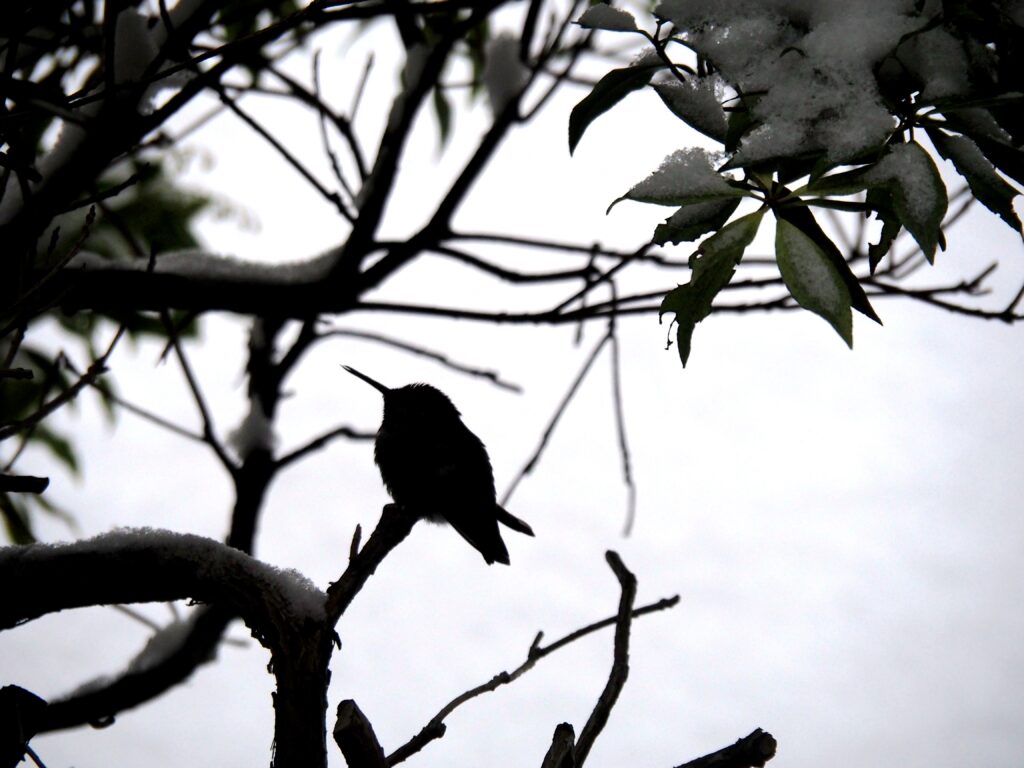
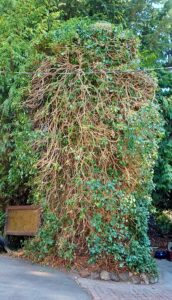
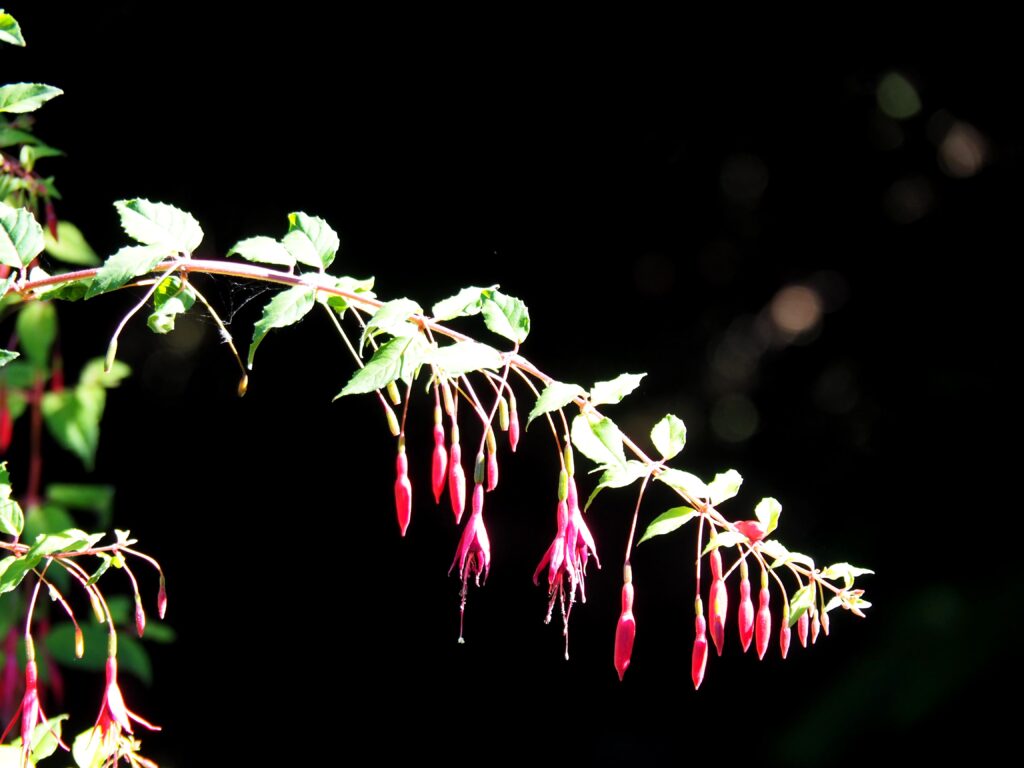

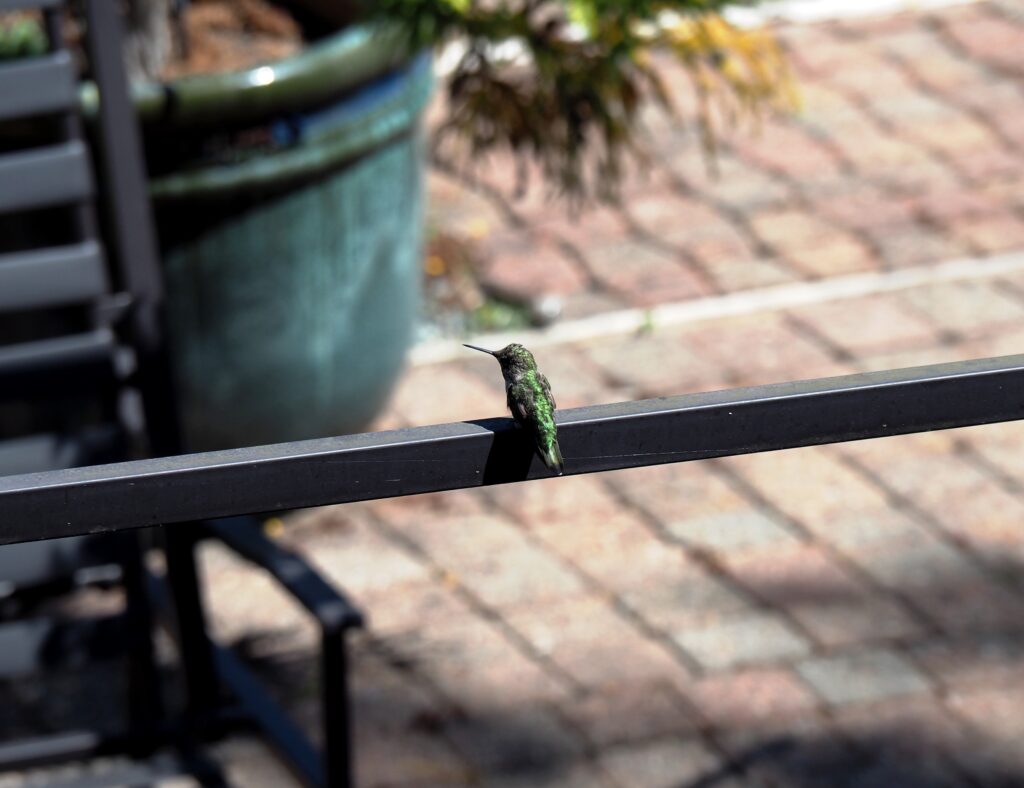
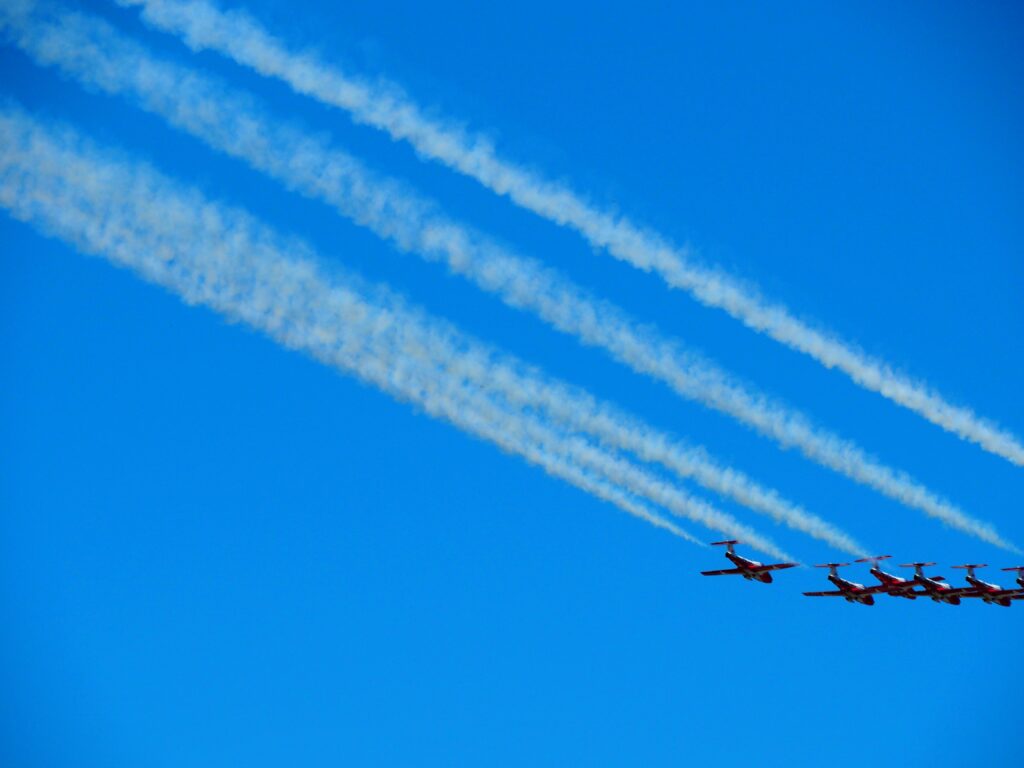
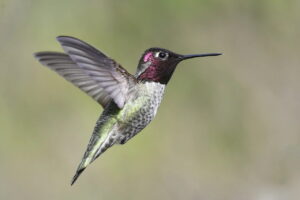
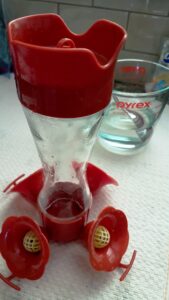
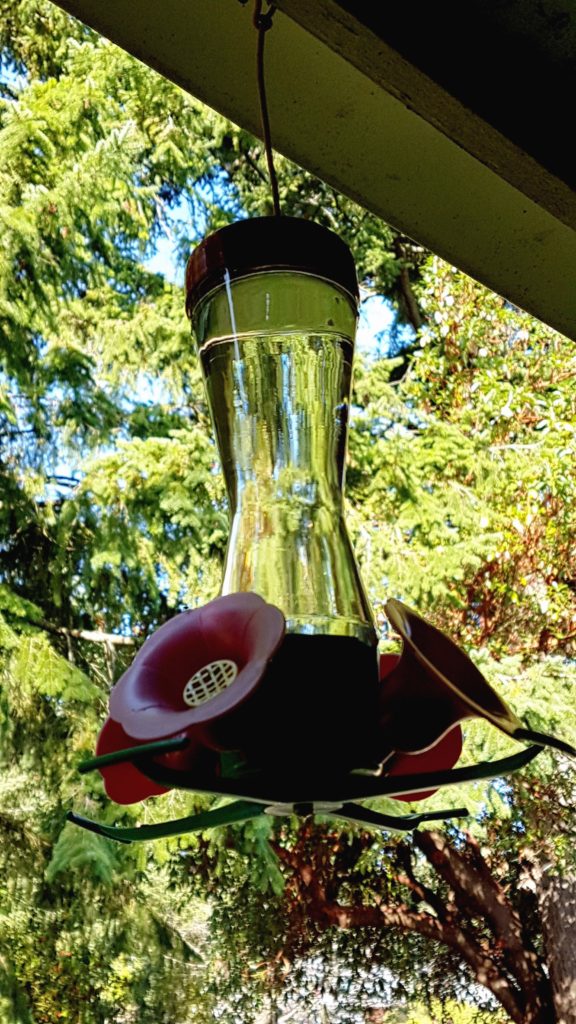
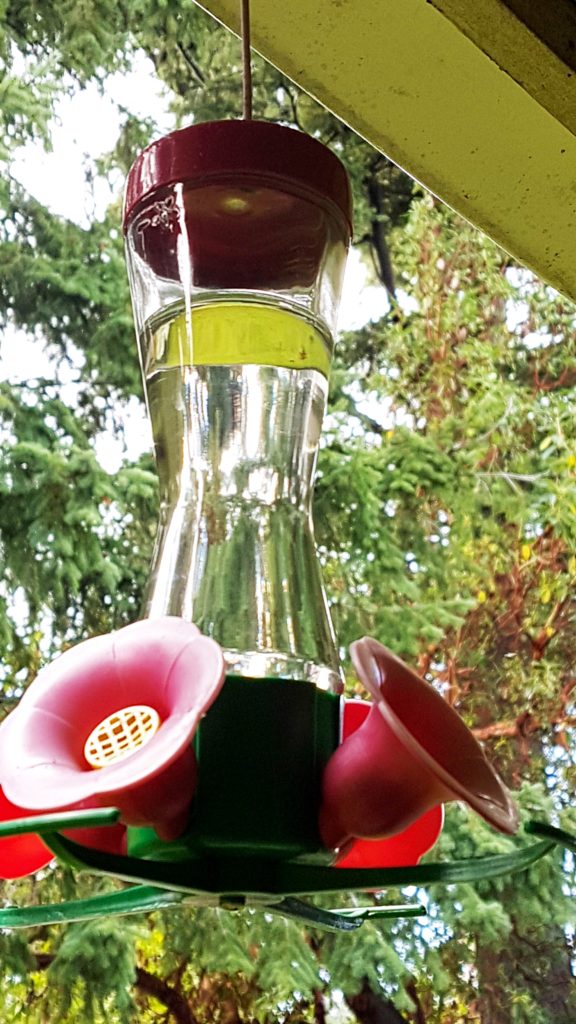
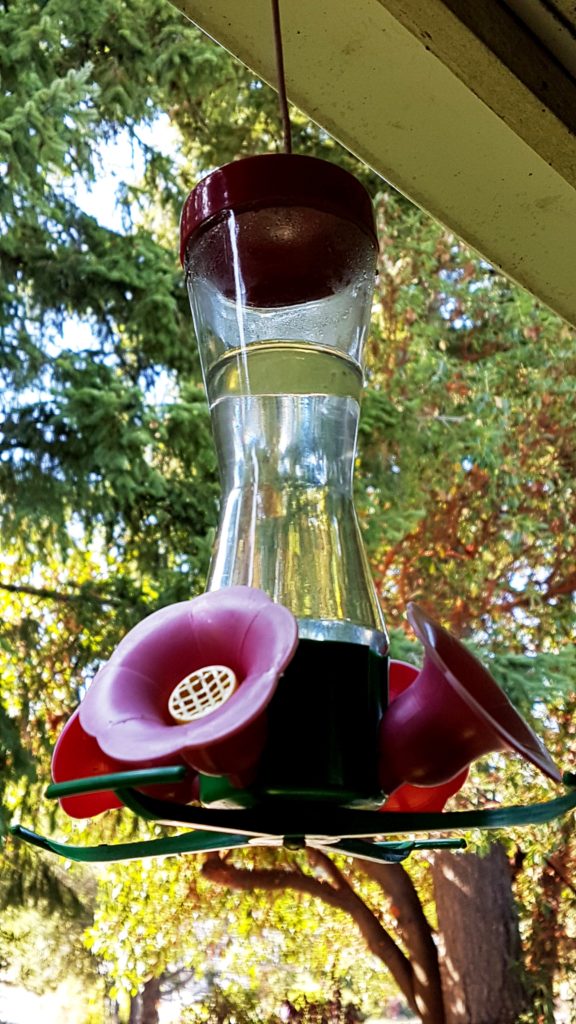
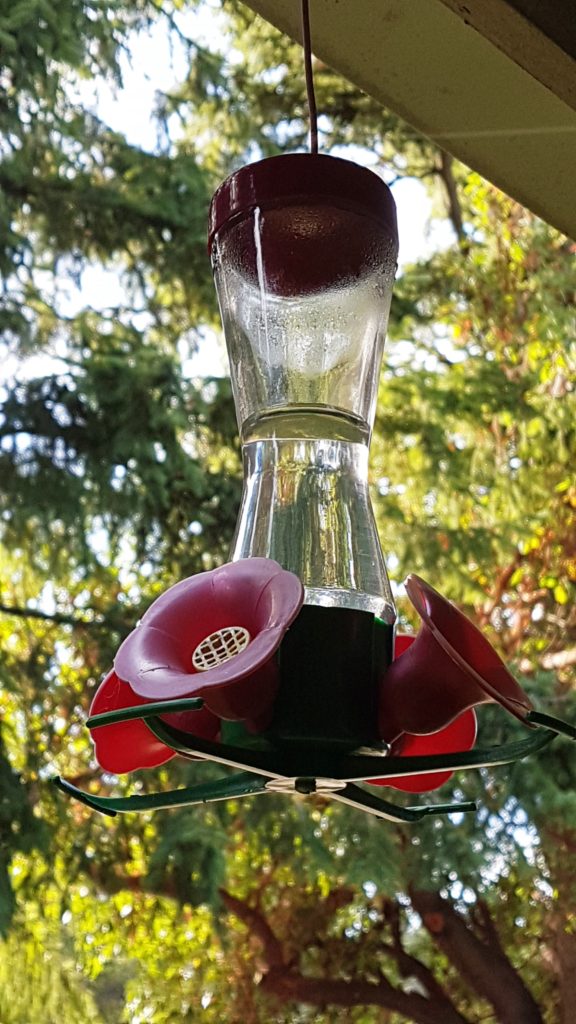
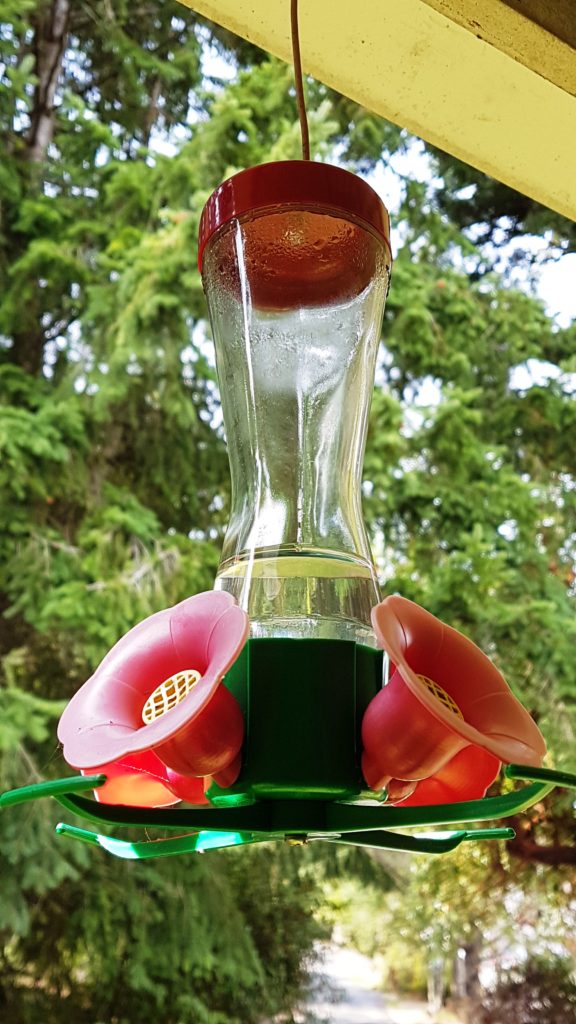
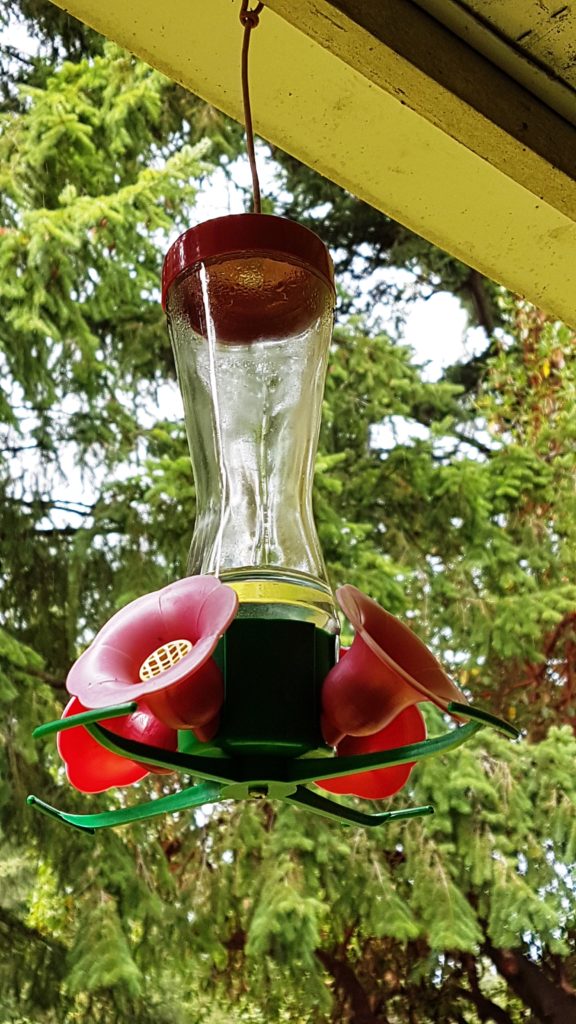
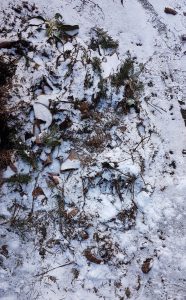
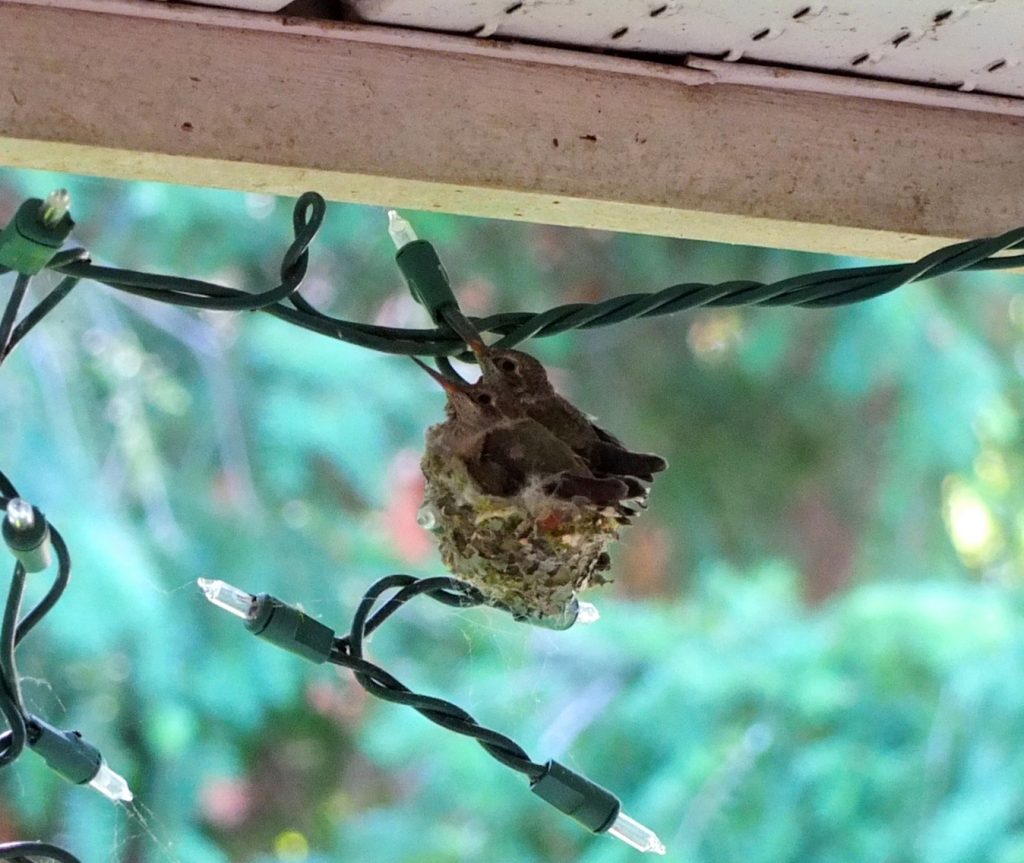
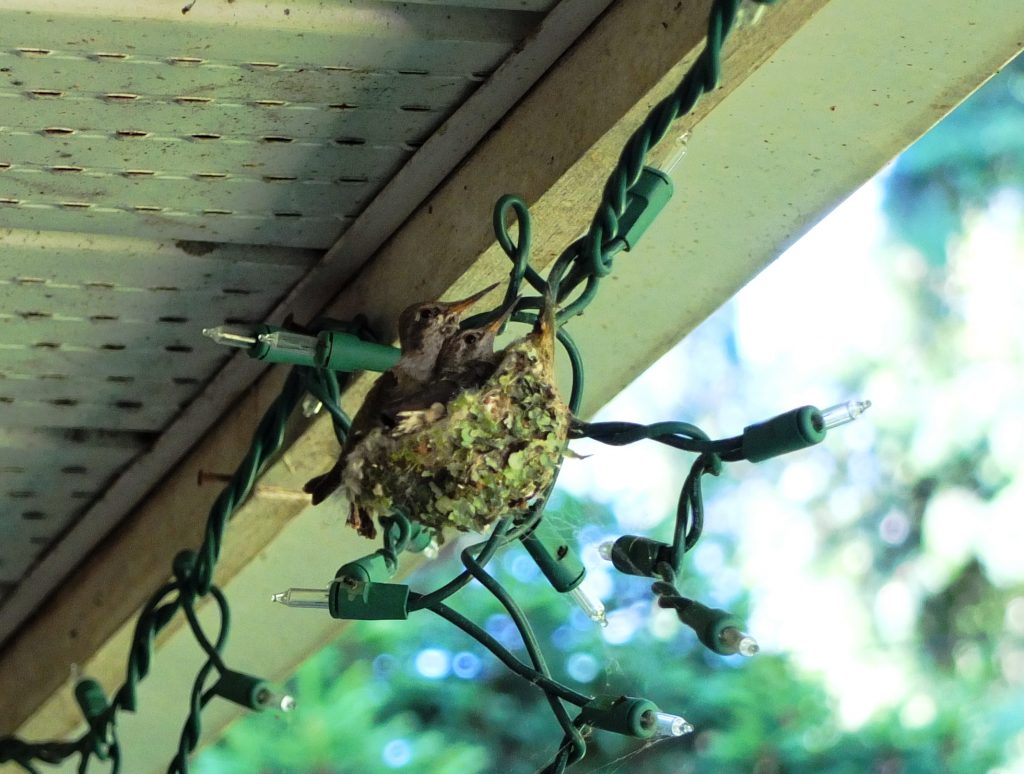
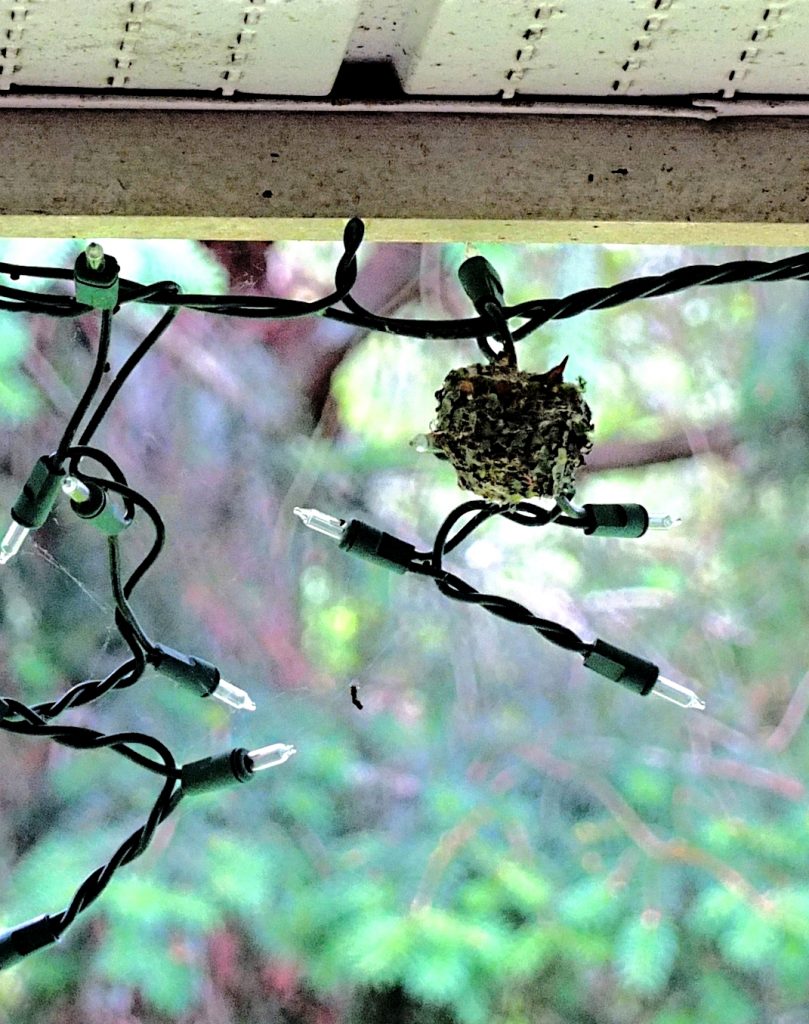
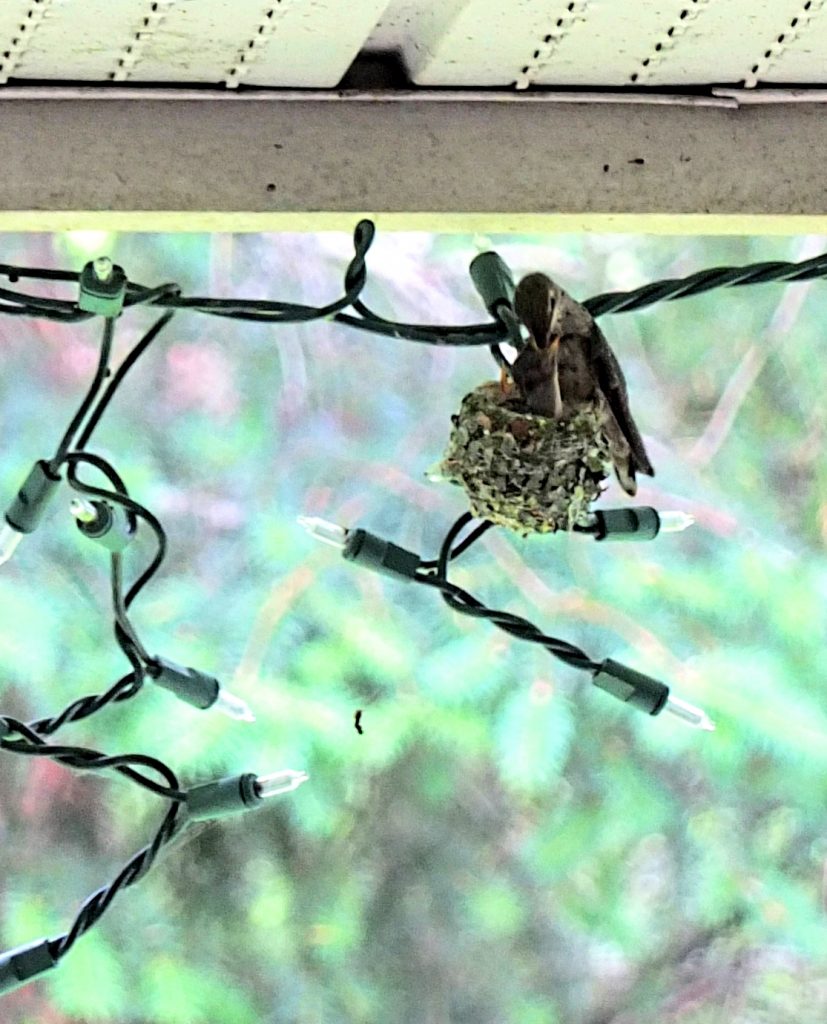
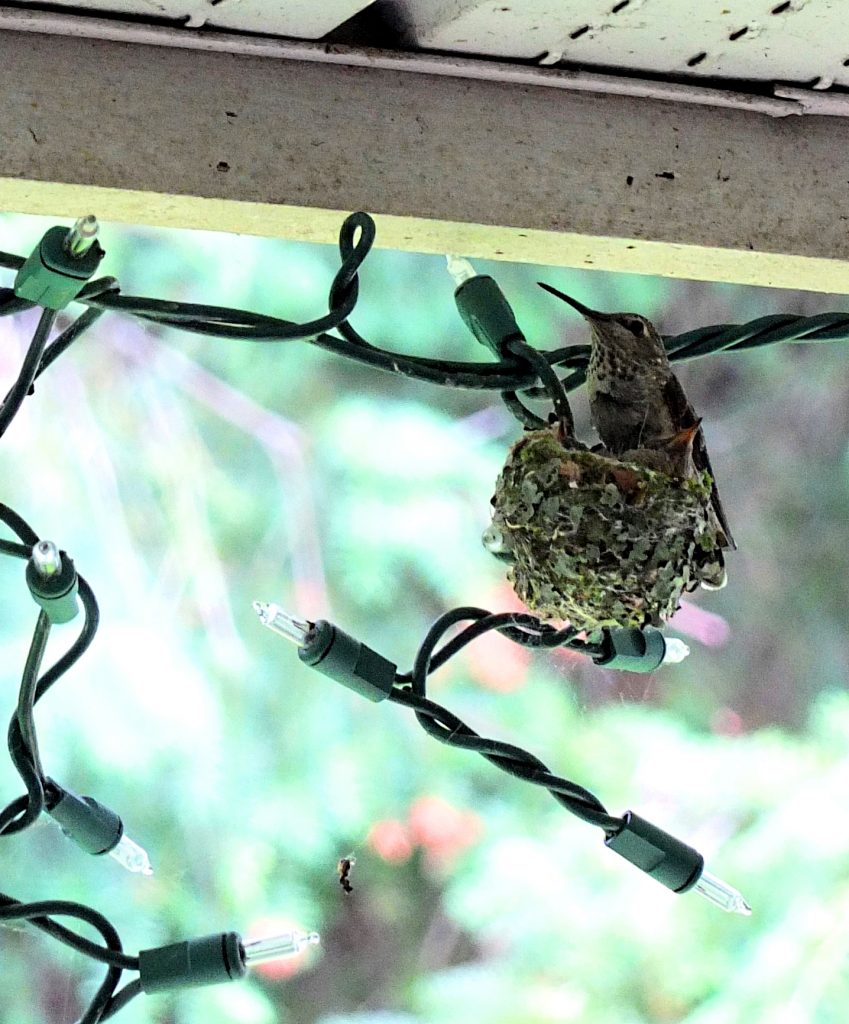
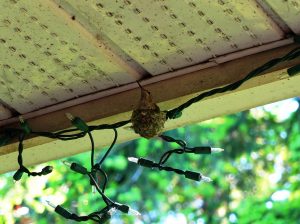


Recent Comments